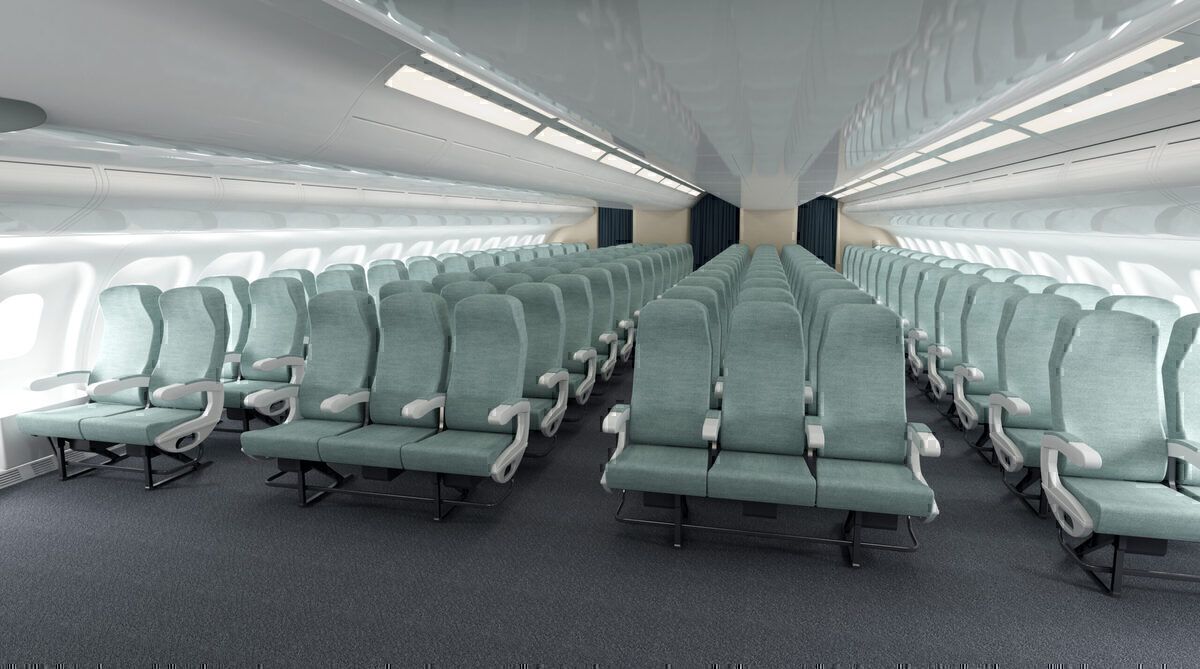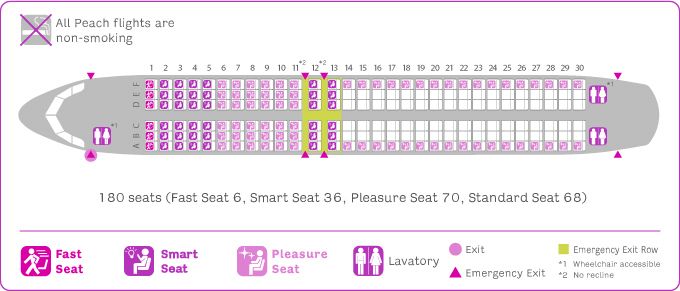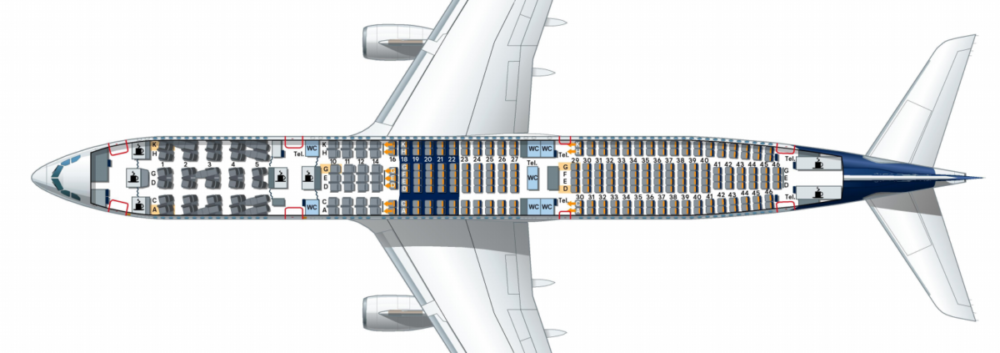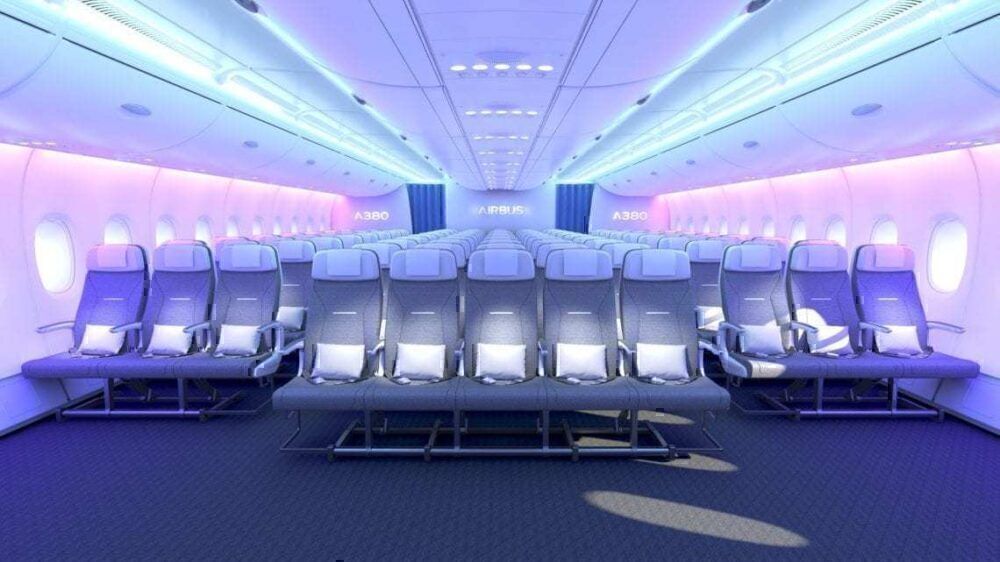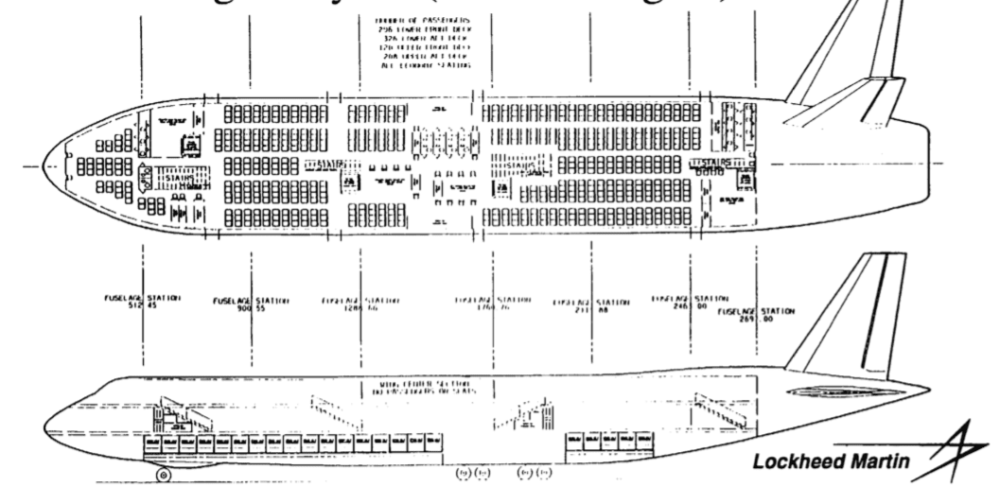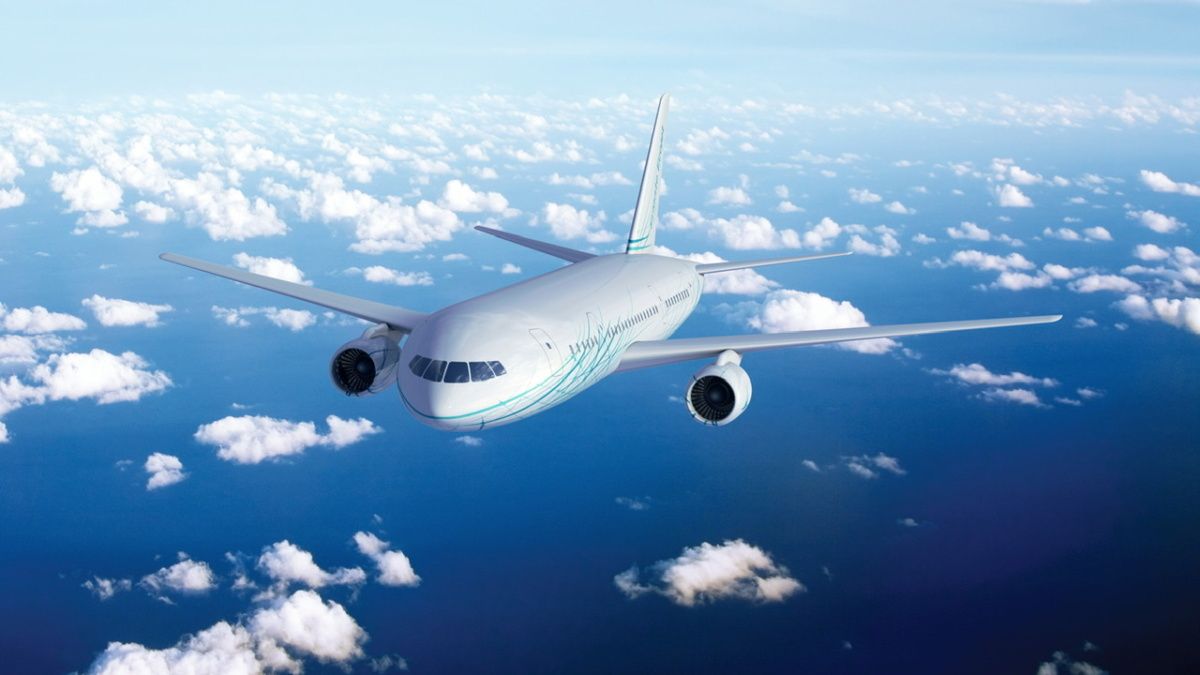There are two types of commercial aircraft: narrowbodies and widebodies, the main difference between them being how many aisles they have. A narrowbody has one aisle, and a widebody has two. But could there one day be an aircraft with three aisles?
Why do aircraft have aisles?
The design of an aircraft, with doors at each end of the airframe, necessitates an aisle running throughout. Otherwise, passengers would have to climb over each other during boarding (or access their seat through the window).
Therefore airlines have found that the best configuration is an aisle running through the middle of the plane and seats fanning out each row.
When planes got bigger, airlines started to use two aisles (or twin-aisles) to create a new middle collection of seats. While widebody aircraft could technically carry more passengers with a single aisle, the experience would not be particularly comfortable. Thus, two aisles are used for long-haul widebody aircraft.
An advantage of this twin-aisle design means that no passengers are more than two seats away from an aisle at any time to access food, bathrooms, and to disembark. But could we ever see an aircraft with three aisles?
Why would an aircraft have three aisles?
First, we need to justify the reason why an aircraft would need three aisles. Most certainly, it would come down to whether or not the aircraft was wide enough. This plane would need to be so wide that any passengers would be split into four distinct seating areas.
A realistic example might a 2-3-3-2 configuration. Some planes can have 10 or 11 seats but would facilitate more privacy for passengers to sit alone or with just one other passenger. However, it can't fit inside a typical plane today as the extra aisle would add too much width.
However, if the plane was even wider, but only fractions wider than today's aircraft, it could fit 3-3-3-3 passengers.
Other questions might ask the point for this third aisle (food delivery or movement around the cabin) and if the airline can get away with just two aisles and keep the extra room for seats.
Will one ever be built? Lockheed's Design:
Interestingly, Lockheed had a design for an aircraft with not three aisles, but four! It would have sat passengers in a 3-4-3-4-3 configuration and allowed them plenty of common space to get up and move about the cabin.
The plane could carry around 900 passengers on two decks, but the FAA raised serious questions about how passengers could escape in an emergency.
The Frigate Ecojet
Another design is Russia's Frigate Ecojet. This aircraft, which has roots going back almost 30 years was designed to have the economics of a narrowbody aircraft with the capacity of a widebody.
TsAGI100 shared that the plane would have at a cruising speed of 850 km/h. Also, one of its main innovations is its use of an oval fuselage, which is in a cross-section and offers a setup of three aisles in the cabin. Designers hope that this structure ensures increased comfort for travelers.
Conclusion:
Although while we can't say for sure if we would have liked to fly onboard these proposed aircraft, it certainly makes modern 'wide-bodies' look awfully narrow indeed.
What do you think? How many aisles should a plane have? Let us know your thoughts in the comments.

